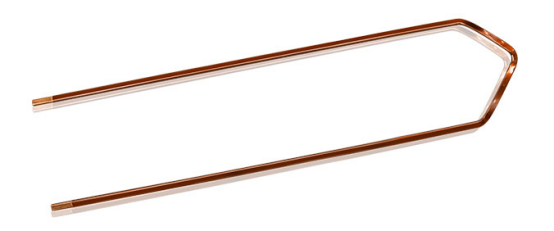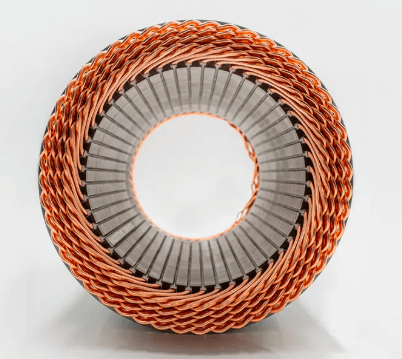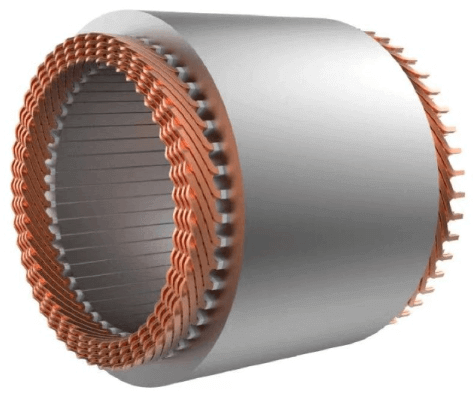Hairpins are commonly used in both industrial and everyday applications, from consumer products to mechanical systems. The process of manufacturing these hairpins, particularly through specialized machinery, plays a crucial role in ensuring their precision, efficiency, and quality. The hairpin making machine has become essential in meeting the demand for consistent and high-quality products in various industries.

This article will explore the hairpin making machine's technology, its working principle, and its growing importance in the manufacturing sector. We will also discuss the latest advancements and trends in hairpin forming technology, making this article a comprehensive resource for engineers and technical professionals in the field.
1. What is a Hair Pin Making Machine?
A hair pin making machine is a specialized piece of machinery used to shape wire or metal materials into the form of hairpins. These machines are designed to efficiently produce hairpins in large quantities while maintaining consistent quality and precision.
The basic working principle of these machines involves feeding raw materials (typically metal wire) into the machine, where it is processed through a series of forming and cutting operations. The machine uses mechanical or hydraulic pressure to form the wire into the desired shape, after which it is trimmed and finished.
Hairpin making machines are used in industries such as automotive, electronics, household products, and more. These machines are essential for producing hairpins used in a variety of applications, including electrical components, mechanical systems, and fashion accessories.
2. Overview of Hairpin Forming Technology
Hairpin forming technology is the process through which raw materials, typically metal wire, are shaped into the form of a hairpin. This can be achieved using mechanical pressure or through thermoforming methods that involve heating the material to make it malleable.
The primary goal of hairpin forming is to create consistent shapes with precise dimensions. This process requires specialized machinery that can accurately control the bending, shaping, and cutting of the material. Through the use of advanced automation, hairpin forming machines can deliver high-quality results with minimal human intervention, improving both the speed and accuracy of production.
In hairpin forming, the design of the hairpin shape is crucial. The machine must be able to adjust its settings to create various shapes, sizes, and configurations of hairpins depending on the needs of the application. Achieving this with high precision requires advanced programming and fine-tuned mechanical controls.
3. Working Principle and Design of the Hair Pin Making Machine
A hair pin making machine is typically comprised of several key components that work together to achieve the desired results:
Drive System: The drive system is responsible for moving the raw material through the machine. This system ensures precise motion control to allow for accurate bending and shaping of the hairpin.

Forming Dies: These are custom-designed molds that shape the material into the specific form of the hairpin. The design of these dies is crucial, as they need to be tailored to produce the required shape with high accuracy.
Cutting System: After the material is formed, it is trimmed and cut into individual hairpins. The cutting system ensures that the hairpins are of uniform length and meet the required specifications.
Automation Control: Modern hairpin making machines are equipped with automated systems that regulate the entire manufacturing process. This allows for increased precision, reduced errors, and faster production cycles.
·
Additionally, material and temperature control systems are integrated into the machine to ensure optimal conditions for forming different types of materials, including stainless steel, copper, and aluminum. These systems help manage the temperature of the material and ensure it remains within the necessary range to maintain its formability.
4. Technological Innovations and Trends in Hair Pin Making Machines
In recent years, there have been significant innovations in hair pin making technology. These advancements have focused on increasing automation, improving speed, and enhancing precision, all while reducing costs. Some key trends in the field include:
Automation and Smart Control: One of the most notable trends is the shift towards greater automation. Hair pin making machines are now equipped with smart control systems that allow for real-time monitoring and adjustments during production. This results in faster, more efficient operations with minimal human intervention.
Application of New Materials: As industries evolve, there is a growing demand for hairpins made from materials that offer higher strength, corrosion resistance, or other specific properties. Hairpin making machines have adapted to handle materials like stainless steel, aluminum alloys, and specialized alloys that are better suited for demanding applications.
Precision and Speed Enhancements: To meet the needs of large-scale manufacturing, hairpin making machines have become faster without sacrificing quality. New technologies such as high-precision servo motors and advanced robotics allow for faster production cycles while maintaining high levels of accuracy.
5. Hair Pin Making Machine in Real-World Applications
Hair pin making machines are employed across a wide variety of industries, including:
Automotive Industry: In automotive manufacturing, hairpins are used in components such as motors, electrical systems, and other mechanical parts. Hairpin making machines play a critical role in ensuring the consistent quality of these parts.

Electronics: Hairpins are used in the production of electrical components, such as connectors, switches, and sensors. The precision offered by modern hair pin making machines is essential in meeting the stringent requirements for electronic components.
Household Products: In consumer goods, hairpins are used in products like hair accessories and kitchen equipment. These items require precision and consistency in production, which is provided by hairpin making machines.
In each of these sectors, hairpin making machines help improve product consistency, reduce manual labor, and increase production efficiency. With their ability to create large quantities of uniform, high-quality hairpins, these machines are indispensable to modern manufacturing processes.
When selecting a hair pin making machine, several factors must be considered:
Production Requirements: The desired output, material type, and specific application requirements will influence the choice of machine.
Machine Precision: High-precision machines are essential for applications where tight tolerances and consistent quality are critical.
Automation Capabilities: Machines with advanced automation features, such as programmable settings and real-time monitoring, can increase efficiency and reduce human error.
Cost and Maintenance: The initial cost of the machine, along with its maintenance and operational costs, should be evaluated to determine the best option for your production needs.
Choosing the right machine requires a balance between performance, cost, and long-term reliability, ensuring that it meets both the technical and business requirements of the manufacturing process.






